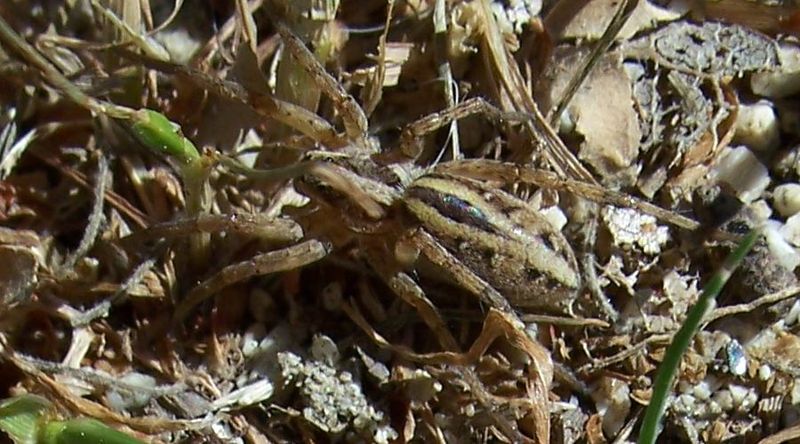Nutrition
Due to the lack of information available about
the Schizocosa mccooki, we are to assume the diet of the
S. mccooki is relatively similar to other species of wolf
spiders. With that being said, wolf spiders are known as active
hunters who run down and ambush their prey. The prey of the
Lycosidae family includes insects, typically beetles and
grasshoppers but also find some nutritional value in mosquitos,
which are native to the region of inhabitance, small reptiles and
amphibians and also other arachnids. In some instances, wolf spiders
will eat one another. As stated in the interaction page, the
Schizocosa mccooki will fight and ingest Alopecosa kochi
and Parados tuoba. The A. kochi and P. tuoba
live on the edge of the meadow, which is where the S. mccooki
is commonly found, and in the forested areas (Suttle, 2003). Also
ingested by the wolf spider would be amphibians. These amphibians
are typically frogs that are slightly larger than the wolf spiders.
As you might imagine, a frog is quite a bit harder to take down than
an insect, but do provide quite a bit more nutritional value than
insects do, so it is well worth the energy invested in the task
(DeMarino, 2013).
Using its diligent speed and cunning knowledge, the Schizocosa mccooki use their legs to grasp hold of prey, whilst in the middle of their vice grip, the S. mccooki then use their powerful jaws to clamp down, crushing the prey and making it a victim of the life cycle of nature. Once the S. mccooki has the prey in this position, it begins to inject venom that starts the process of indigestion. The S. mccooki, along with many other spiders practice the act of “superfluous killing” (Krebs, 1993) which is a style of predation where the spider will kill its prey, then either consume half of the victim, or abandon it right after it is killed, almost like a hit-and-run. A feeding habit of the S. mccooki can be classified as an arthropod feeder, which entails the consumption of invertebrate animals such as: insects, other spiders and/or crustaceans. The S. mccooki are carnivorous and insectivorous, which means they feed on other animals for means of food instead of plants (York, 1976). Insectivorous depicts that the vast majority of the dietary needs are met by consuming insects. These spiders have evolved into expert hunters and consumers, which has allowed them to flourish.
To learn more about interactions click HERE
